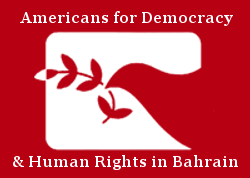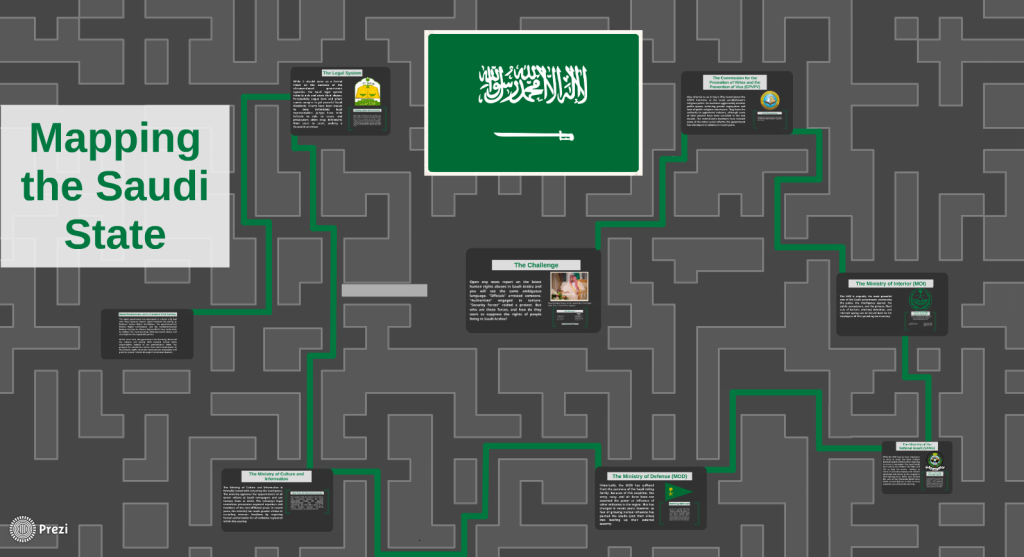*Best viewed in full screen mode
Due to a lack of information, media outlets and international advocates for political reform in Saudi Arabia have often treated the various and competing bodies of the Saudi government as one uniform repressive machine. Without being able to differentiate between dissimilar agencies with divergent mandates, however, leaders are distanced from responsibility. This, in turn, allows their greatest benefactors—the U.S. government among them—to continue providing support without pressing for concrete reforms. Stating that the ever-present Saudi “authorities” or “officials” committed a given abuse spares the perpetrator from accountability. When the international community demands that Saudi Arabia must end its human rights abuses without specifying which agencies should be reformed and who should be held accountable, the United States president himself can ignore such calls while giving personal audience to those Saudi officials most responsible for perpetuating arbitrary detention, torture, and other forms of violence.
To address these problems and help civil society propose more concrete reforms, ADHRB is launching “Mapping the Saudi State,” an ongoing series that will correct the substantial misinformation surrounding the functioning of the Saudi government. Every month, ADHRB’s Saudi Advocacy Program will publish a concise and informative profile on a Saudi agency or ministry which directly contributes to human rights violations and the restriction of basic freedoms. Through interactive presentations, detailed background reports, and sourced lists of prominent abuses, readers will obtain a sense of how Saudi institutions function in practice, how they connect, and how they compete with each other for influence. Finally, each month the Saudi Advocacy Program will propose a set of detailed reforms to jumpstart the conversation over ways in which Saudi Arabia’s allies—especially its most crucial partner, the United States–can help to bring it in line with international human rights norms.
The passing of King Abdullah and the recent cabinet reorganization undertaken by his successor only highlights this project’s pressing importance. Fresh faces now control the reigns of powerful ministries. This transitional period is the best opportunity yet to ensure that authoritarian practices are not maintained by a new generation, and that Saudi citizens reap the benefits of a more open and tolerant state. To effectively push for this change, however, advocates for the rights of Saudi citizens must possess more than a cursory understanding of the structures they want reformed.
Chapter 1 of Mapping the Saudi State, reviewing the Commission for the Promotion of Virtue and the Prevention of Vice, can be found here.
Chapter 2, the first in a two-part series covering the Ministry of Interior, can be found here.
Chapter 3, the second in a two-part series covering the Ministry of Interior, can be found here.
Chapter 4, reviewing the Saudi government’s media censorship apparatus, can be found here.
Chapter 5, reviewing the Saudi Arabian National Guard, can be found here.
Chapter 6, reviewing the Ministry of Defense and Aviation and the Saudi armed forces, can be found here.
Chapter 7, reviewing the Ministry of Islamic Affairs and the destruction of religious and cultural heritage sites, can be found here.
Chapter 8, reviewing the Ministry of Justice and the Saudi judiciary, can be found here.
Chapter 9, reviewing the national human rights institutions, can be found here.





